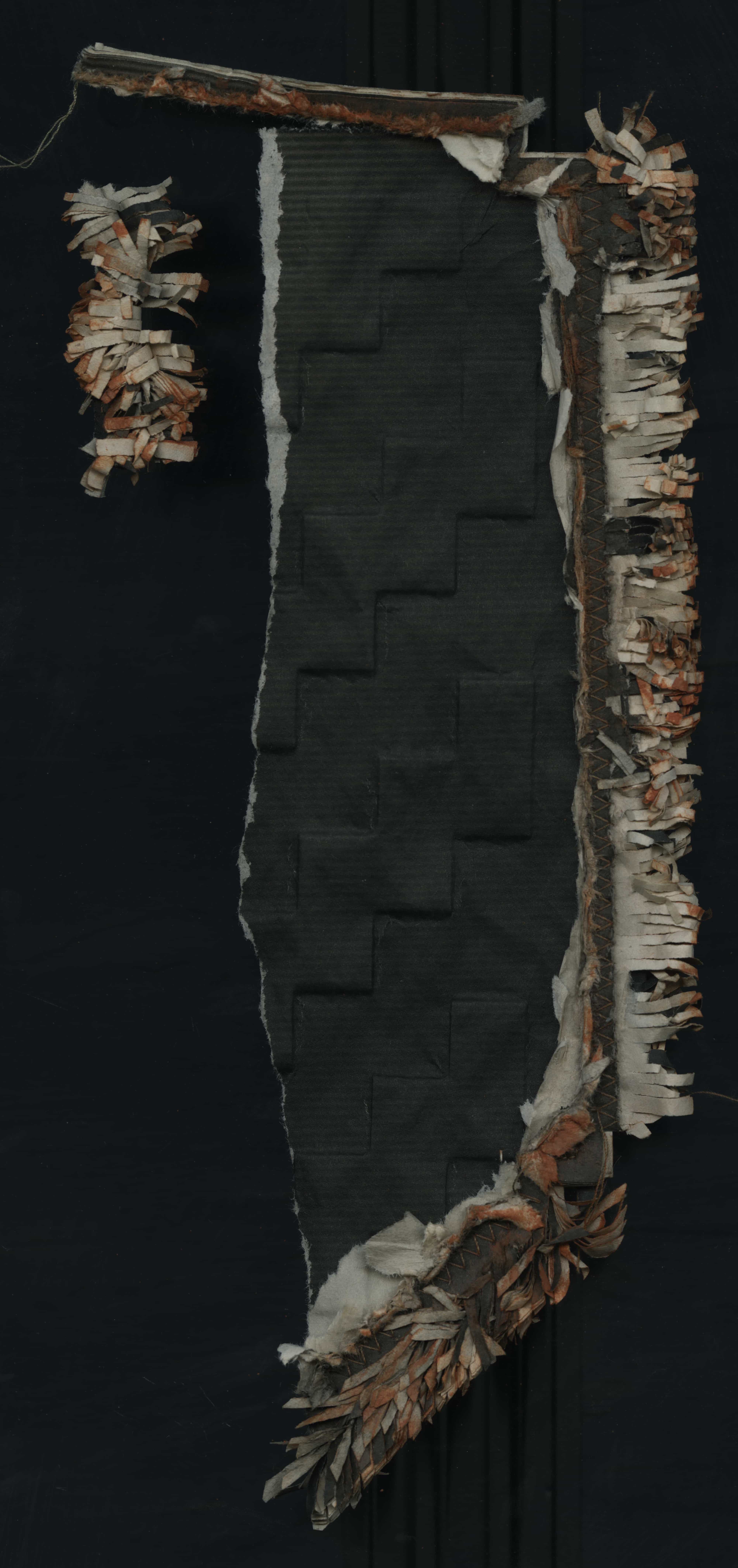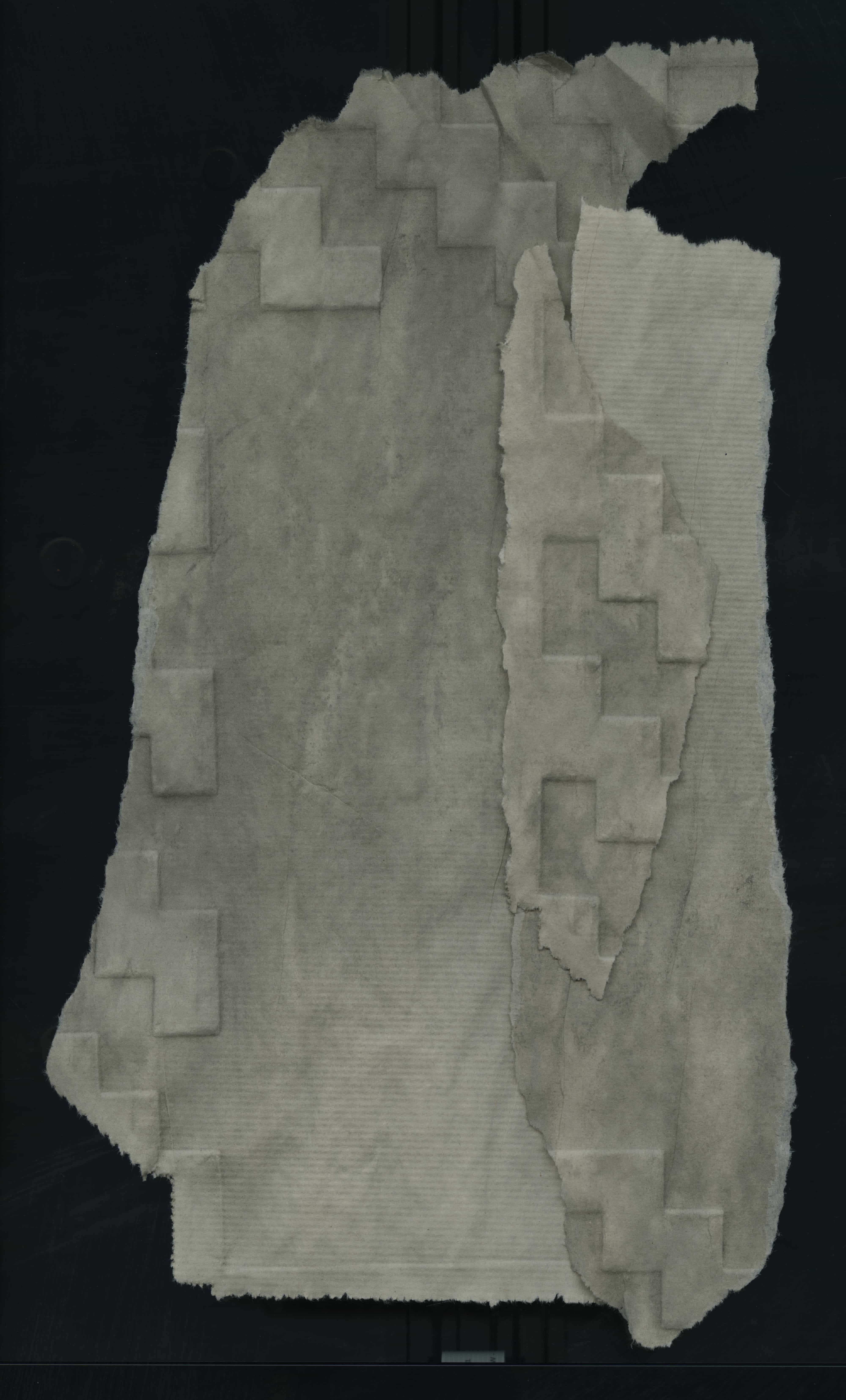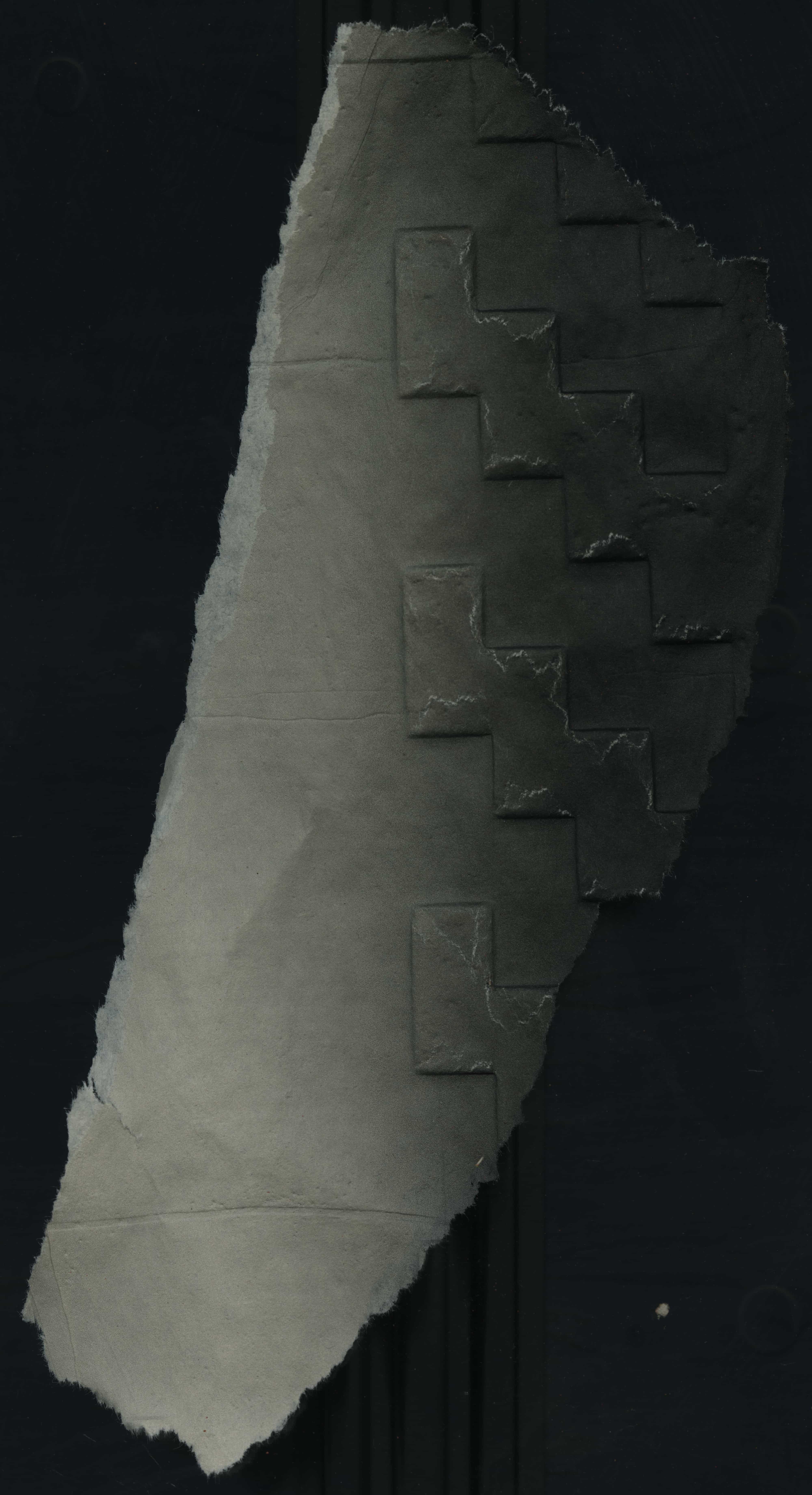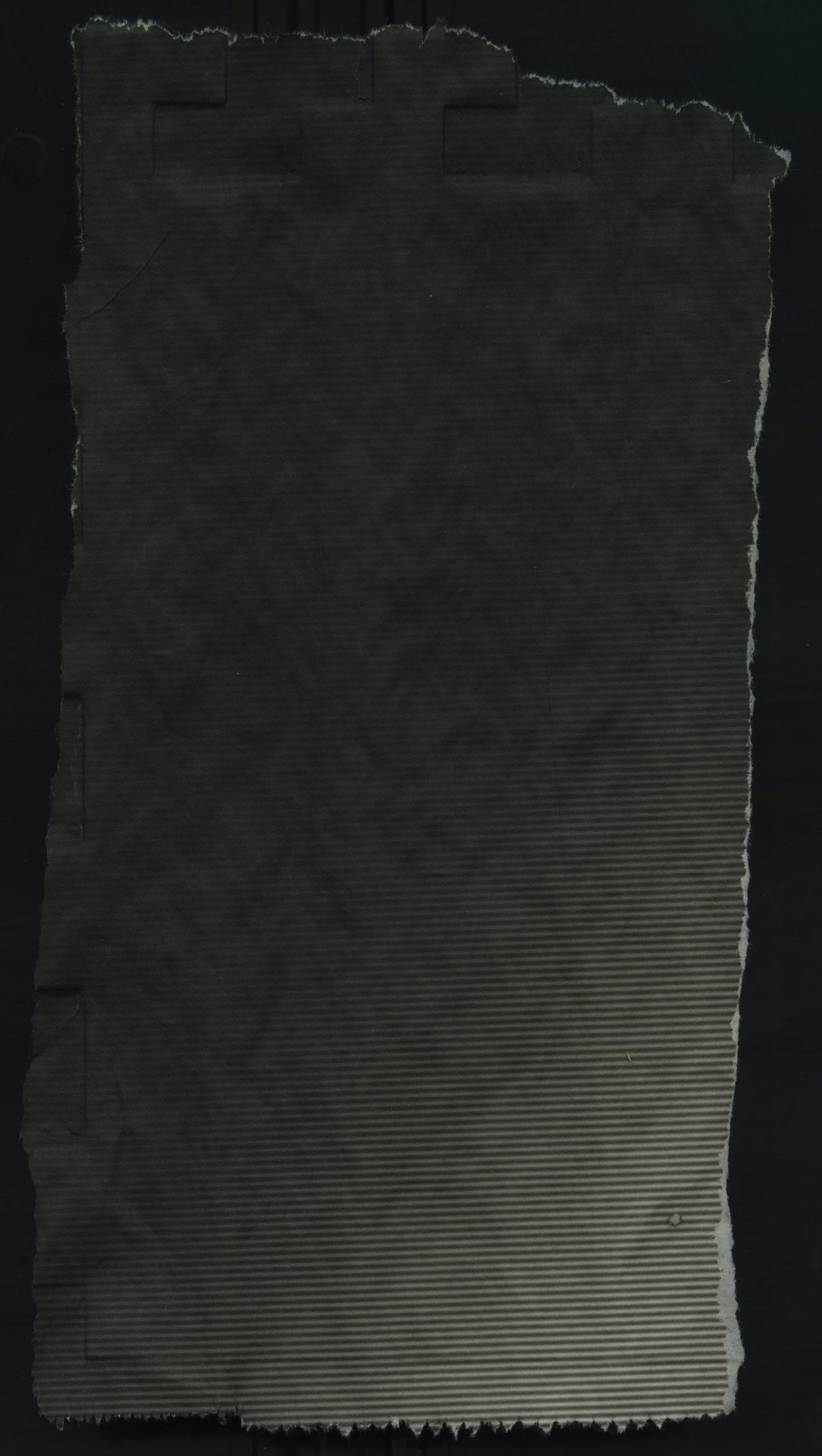Single Crystals
Tanoa Sasraku




Tanoa Sasraku primarily uses newsprint as the material of her abstract compositions. This is a collage classic: a piece of the day’s newspaper on and as the surface of the artwork brought reality and temporality directly into the frame, while cutting it into a certain shape kept the figurative illusionism going — the newspaper pasted into the composition complicated the straightforwardness of representation and time, and it did so on the surface, in plain sight. Newsprint, even when unprinted (as in Sasraku's works), retains this strange tie with representation and time: it is highly absorbent, it’ll quickly take in an ink transfer with the news or virtually any other input from its surroundings; it is also non-archival, it won’t last very long before it starts to deteriorate because it was specifically designed for a dedicated service to the present and its ephemerality. Through her process, Sasraku manages to manufacture durability out of this material, expressing a temporality that is at odds with the one that was embedded in it at the start. She steeps stitched together sheets of the paper in water and natural pigments from stones that she forages from Devon, where she grew up; the paper soaks outdoors and expands, then dries out contracting around the thread, acquiring a rigidity, almost a spine to stand up to the rough environment. The newsprint ends up resembling stone: its hardened surface points back to the landscape that has given it shape, texture and colour, literally carrying the traces of it — material markers of place and culture that become constituent and integral. Sasraku’s own personal experience of the British rural as a mixed-race queer person is non-explicitly here, non-referentially transposed, evading the capture of representation and refusing to admit that superficiality can only be flattening — the surface has its own depth, and here it has been bloated to its limits, deepened and widened to hold more and to hold it for longer. These sculptured bundles of newsprint act as bodies marked by place and duration like abstract photographic paper — the monochrome fields of black toner stress this negation of narrativity or any sort of clear depiction of where and when, of any form of generically successful communication, receded here to make way for intensity. In his talk “Conceptual Undoings” (2021), curator Cédric Fauq addresses Combat de nègres pendant la nuit (1882), the first black monochrome, the art historical antecedent of Malevich’s black square (1915), to discuss how Blackness makes itself illegible in the context of Modernity and how race has always been a concept to undo. Originally conceived as a racist joke, the painting can only be understood by reading its title, which plays on the invisibility of Black bodies in the dark by describing the scene that it allegedly represents while offering to the viewer nothing but an opaque black surface — as Fauq explains, this monochrome unintentionally elaborates a critical examination of race by detaching Blackness from bodies and laying it bare on a surface that can be disputed, giving way to its undoing. The language that Tanoa Sasraku deploys here is square and familiar, however, its outcome can be evasive. Tartan can conduct personal stories and histories without resorting to narrative, referential images, but grasping this personal content requires knowing its code, some degree of shared experience or community — a counterpublic. Agnes Martin’s geometric compositions can be seen as ordinary instances of the general style of Modern abstraction during that period, but they might also be taken as specific expressions of a queer experience of time and place (outside of the world, outside of time). Her paintings make use of an abstract motif that was widespread during the 60s and at the same time they are heavily charged with the personal. The intensely experiential and expressive character of Martin’s work is undisputed, but this character is always thought to lie somewhere underneath the surface, as if the grid was hiding it behind a cover of apparent coldness. The experiential and the expressive are on the surface, in plain sight, formally encrypted in a way that they can evade legibility; it is the grid itself that expresses Martin’s queer experience: a non-reproductive and non-sequential duration that fabricates its own temporal unfolding by means of the absolutely predictable repetition of the same, always identical to itself, constructing a future for itself cell by cell. Martin spent her entire life drawing grids and yet she always considered herself an abstract expressionist. As Eve Kosofsky Sedgwick explains in discussing queer reading, attention paid to the formal and immediately external aspect of a text does not imply an evacuation of the interest in its passionate or ethical dimensions — on the contrary, this visceral formalism comes from a need for survival and is the way to try to appropriate the capacity for permanence of certain cultural objects, the formulas of their powerful and refractory existence. The grid expresses a personal experience while protecting it from recognition, identification and the violence of visibility. For Sasraku too, the abstraction and geometry of tartan is a field for desire that enjoys the protection of a certain opacity. For Édouard Glissant, opacity is the right to not have to be understood on others’ terms, and to be misunderstood if one so chooses — his image of opacity is precisely a textile surface: “opacities coexist and converge, weaving fabrics” (1997: 190). A story encrypted on an opaque textile surface, in plain sight, is the visible image of subsistence within an irreducible singularity (Glissant, 1997: 190).
Cédric Fauq, “Conceptual Undoings”, 2021.
Édouard Glissant, Poetics of Relation, 1997.
Eve Kosofky Sedgwick, “Queer and Now” in Tendencies, 1994.
Text: Beatriz Ortega Botas and Alberto Vallejo.
Tanoa Sasraku. Born in 1995, and raised in Plymouth (UK), Tanoa Sasraku's practice shifts between sculpture, drawing and filmmaking, juxtaposing and performing British, Black, Ghanaian and queer cultural histories. Sasraku’s stitched and torn newsprint works are inspired by the material structure of the Fante Asafo flags of coastal Ghana and geometric forms found in Tartan cloth, towers and pinnacles of rock. Her own banners map personal stories of a life lived in modern Britain, as newsprint, pigment and basic craft processes bind together to create cryptic, ceremonial objects.